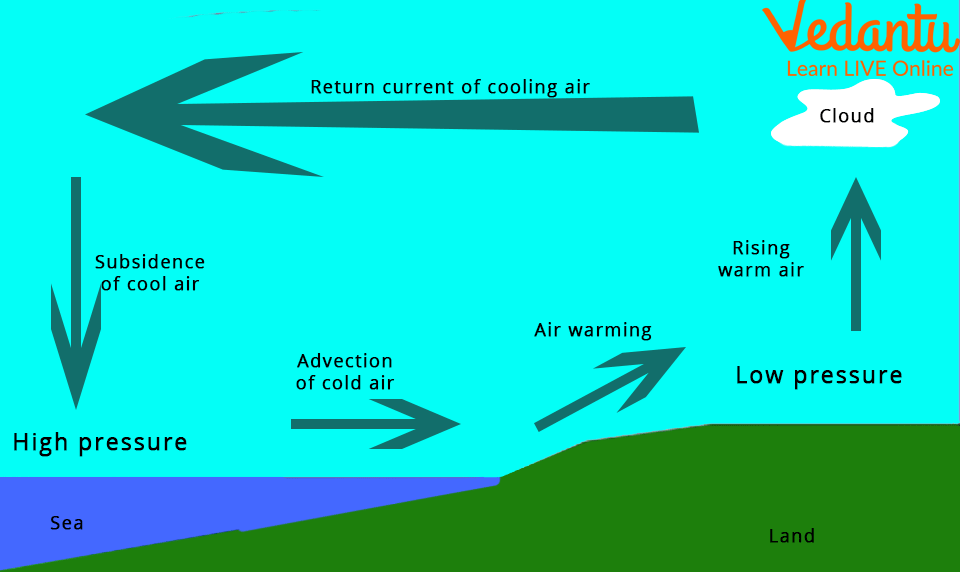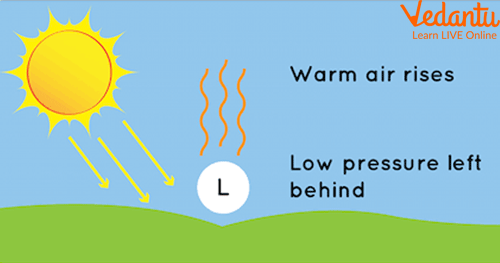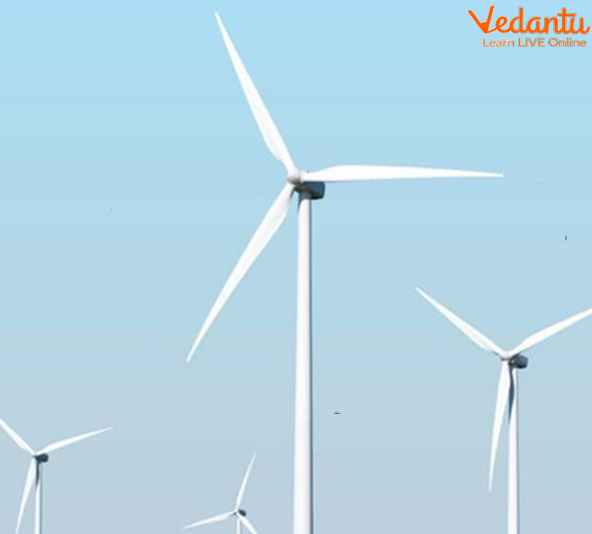




Step-by-Step Guide: How Wind Forms and Impacts Our Environment
There is always variation in the pattern of weather. Sometimes it's sunny, sometimes it's humid, sometimes it's windy. On a windy day, we feel very happy, we enjoy it a lot but when the speed of the wind is very fast, it also becomes difficult for us to even stand properly. Also, we have observed people love to fly kites and the wind is required to fly a kite.

Kids Playing with The Wind Wheel
Also on a windy day, we see wind everywhere. But have you ever thought about where this wind comes from? How wind is formed? What makes the wind blow all of a sudden? Let's study it in detail.
What is Wind?
Wind refers to the moving air and is caused due to the differences in the air pressure within the atmosphere. It refers to the movement of air which is caused due to the uneven heating of the Earth by the Sun and due to the Earth’s own rotation.

Effect of Winds
How is Wind Formed?
When the air gets heated due to the radiation from heated land or water, it gets raised. But because land gets heated up quicker than the water, the air over the land also gets heated up quicker than the air over the water bodies.
As the air which is heated gets raised, a region of low pressure is formed and air over the water bodies moves into the area of low pressure. This movement of air which takes place from one place to another forms winds.
Direction of Wind
The direction of the wind is from the sea to the land during the daytime. At night both the sea and the land start to cool down. Because water cools down slower than the land, the air which is above the water gets warmer than the air which is above the land.

Formation of Wind
The Main Source for the Formation of Wind
The main source for the formation of wind is the Sun. The wind is a renewable form of energy that is free. It has been used so far to grind grain, pump water, and power ships. The wind gets created when the Earth’s surface is unevenly heated due to the Sun.

Sun Contributing to The Formation of Wind
Causes of Wind
The wind is caused due to the differences in the air pressure that begins due to the Sun.
When the sunlight reaches the surface of the Earth, it does not emit equal heat.
At different angles, it strikes different places, creating unique degrees of warming.
Interesting Facts
The Wind is one of the fastest-growing renewable sources of energy in many countries.
The wind turbines look very simple but they are really complex. A single turbine of wind has nearly 8000 different parts.
Wind as a source of energy is not new. Humans have been using the power of wind in some and other ways for more than thousands of years.
The wind turbines can stand higher than the Sydney Opera House.

Wind Turbines
Neptune and Saturn have the fastest planetary winds in the Solar system.
Sailing ships make use of wind to power their movements taking the help of the sails.

Sailing Ship Uses Wind for its Movement
Anemometers are the tools used for measuring the speed of the wind.
The largest wind turbine in the world is found in Hawaii, in the United States.
Wind power is unique for the fact that it does not make use of any water.
Summary
Winds are formed due to the uneven heating which is caused by the Sun on the Earth’s surface. The wind is being widely used across the world as a source of power energy. Wind energy is a power source that is growing at a very fast pace. During the day, the wind blows from the sea toward the land. The land and the sea both begin to cool down at night. The air above water becomes warmer than the air above land because water cools more slowly than land does.
FAQs on Wind Formation: What Is It and Why Does It Happen?
1. What is wind, and what is the fundamental process of its formation?
Wind is essentially the large-scale movement of air in the Earth's atmosphere. The fundamental process of its formation is driven by the uneven heating of the Earth's surface by the sun. When a particular area of land or water gets heated, the air above it also becomes warm, expands, and rises, creating a zone of low air pressure. Cooler, denser air from surrounding areas with high air pressure then moves in to fill this space, and this movement of air is what we experience as wind.
2. What are the main factors that cause wind to form?
The formation and characteristics of wind are primarily influenced by three main factors:
Differential Heating: The sun heats different parts of the Earth at different rates. For instance, the equator receives more direct sunlight than the poles, and land heats up and cools down faster than water. This creates temperature differences, which in turn create pressure differences.
Pressure Gradient: Air naturally flows from areas of high pressure (colder, denser air) to areas of low pressure (warmer, less dense air). The greater the difference in pressure, the faster the wind blows.
Earth's Rotation: The spinning of the Earth on its axis causes a phenomenon known as the Coriolis effect, which deflects moving air to the right in the Northern Hemisphere and to the left in the Southern Hemisphere.
3. Can you provide an example of how uneven heating creates local winds?
A classic example is the formation of sea and land breezes in coastal areas. During the day, the land heats up faster than the sea. The warm air over the land rises, creating low pressure. The cooler, high-pressure air from over the sea then flows towards the land, creating a cool sea breeze. At night, the process reverses. The land cools down faster than the sea, so the cooler, high-pressure air over the land flows towards the warmer, low-pressure area over the sea, creating a land breeze.
4. What are the two primary properties used to describe wind?
The two primary properties used to describe wind are speed and direction. Wind speed is the rate at which the air is moving and is often measured in kilometres per hour (km/h) or miles per hour (mph). Wind direction is the direction from which the wind is blowing. For example, a 'westerly' wind blows from the west towards the east.
5. How does the Earth's rotation prevent wind from blowing in a straight line?
The Earth's rotation causes the Coriolis effect, which acts as a deflecting force on moving objects, including wind. Instead of flowing directly from a high-pressure to a low-pressure area, the wind is deflected from its straight path. In the Northern Hemisphere, winds are deflected to the right, and in the Southern Hemisphere, they are deflected to the left. This is a crucial factor in the formation of large-scale weather patterns like cyclones and trade winds.
6. If hot air rises, why does wind often feel cool on our skin?
This is a common observation that can be confusing. The wind we feel is often air moving from a cooler, high-pressure region to a warmer, low-pressure region. So, the air itself might be cooler than our surroundings. More importantly, wind feels cool due to the wind chill effect. Moving air strips heat away from our skin much faster than still air does, which creates a sensation of cooling, regardless of the air's actual temperature.
7. Why is it important to understand the concept of wind formation?
Understanding wind formation is crucial for several reasons. It is fundamental to weather forecasting and predicting storms, cyclones, and monsoons. It is vital for generating renewable energy through wind turbines. Furthermore, knowledge of wind patterns is essential for aviation, sailing, and even understanding natural processes like the dispersal of seeds and pollen by plants.





















